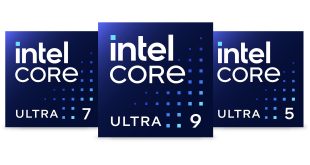A short while ago, KitGuru was invited to AMD's press event with the agenda of discussing the company's mobile products for 2013. It is clear that the mobile market is a big priority for the US-based chip maker, so read on to find out what AMD has in store for the coming months.
The three newest APU series of chips to hit AMD's flourishing mobile catalogue will be Temash, Kabini, and Richland. We'll get stuck into the details of those parts later in the article.
It was easy to see that the mobile market is very much about user experience, from AMD's point of view. The company was keen to point out its new partnerships, technologies and developments which will help to boost the versatility and user-friendliness of its mobile products.
AMD User Experience
AMD was clearly very proud about the fact that thousands of apps are now compatible with its hardware acceleration.
Battery life, hardware acceleration, and picture quality are just some of the key components that AMD has improved with its new generation of mobile products.
An interesting feature was the AMD Steady Video Technology. We didn't get chance to test this, but it works by stabilising home videos on the laptop's end, not the video camera's. This could potentially be an effective way of making low-quality home videos a more enjoyable viewing experience.
On all but the entry-level E-series and A4-series parts, AMD screen mirror technology is supported. This technology allows the computer's screen content to be ‘shared' on the big screen TV. There's nothing special about that, we know, but it's the method of sharing that had us interested – via wireless hardware.
The wireless hardware, which is to be produced by third parties and purchased separately, (with no date confirmed yet) and the technology's overall display performance is 3.9x better than Intel's competing option, according to AMD.
We had the opportunity to test a “Kabini” A4-5000-powered system with the wireless technology which transmits the computer's display signal to a receiver that connects to the TV. While we like the idea of being able to play PC games on the big screen without hassle, the lag that we experienced was on the border of unbearable. Wireless interference could be an issue, but we certainly wouldn't want to be playing a competitive or online game using the technology – we would be put at a severe disadvantage.
Further usability enhancements come in the form of gesture control and face login for the higher-end parts (such as those in the Richland line-up). AMD's Flagship A10 mobile APUs will also ship with game bundles similar to the company's Never Settle scheme.
 KitGuru KitGuru.net – Tech News | Hardware News | Hardware Reviews | IOS | Mobile | Gaming | Graphics Cards
KitGuru KitGuru.net – Tech News | Hardware News | Hardware Reviews | IOS | Mobile | Gaming | Graphics Cards









Finally, AMD has got it almost right in their product lines. Hitting the mid to low ends of the market is where the volume is (it is declining now due to lack of products in this space). Getting a range of products from cheaper ultrabooks at the $400-$600 price range is important. The current $650 and up prices are way to high for the cash strapped market to bear. On the low end side, a good Win8 tablet around $350 mark will make a reasonable student computer/laptop hybrid.
While Intel keep pushing the high end, the mid and low ends were suffering and AMD could not really address them before. Now a complete range of chips exist to fulfill that market. With aggressive pricing from AMD, they might be able to jazz that market back to the volumes prior to Windows 8.